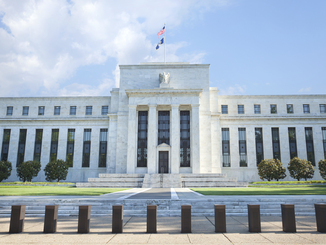Last week’s hearing with Federal Reserve Chairman Jerome Powell doesn’t inspire confidence that the Fed knows what it is doing. Much attention has been focused recently on the yield curve, the spread between 2-year and 10-year Treasury securities, which has become increasingly narrow in recent weeks. The spread is becoming so close, in fact, that it risks inversion, with interest rates on 2-year bonds exceeding that of 10-year bonds. Every time that has happened in recent history, economic recession has occurred within several months.
Yet when asked about the yield curve, Powell seemed to be completely unconcerned. He stated that the Fed would not change the trajectory of its monetary policy no matter what the yield curve was doing, and seemed to think it more important what the neutral rate of interest was. The Fed’s concept of the neutral rate of interest is an interest rate at which the economy is in equilibrium, where unemployment and inflation are in sync and the economy is neither overheated nor cooling down.
The Fed keeps harping on the “neutral rate of interest” even though the interest rate environment we’re currently in keeps any means of discovering a natural, market-based rate of interest impossible. As long as central banks exist, and as long as they continue to buy and sell assets and push trillions of dollars of newly-created money into the financial system, attempting to find the “neutral rate of interest” is just guesswork. We have to trust the financial wizards at the Fed that they know what they’re doing. But that trust would be sorely misplaced.
Powell’s thinking about the yield curve is one indication of that, as back in March he also expressed no fears about inversion of the yield curve. In his view, previous yield curve inversions occurred at times when inflation was higher than it is now, and so Fed actions to tighten monetary policy in order to control inflation was what actually caused the subsequent recessions. Since we have low inflation now, he reasons, we have nothing worry about from a yield curve inversion.
Powell seems to fail to see that what the Fed is doing right now is tightening monetary policy and that it will have an effect on the economy and hasten the onset of the next recession. While official price index figures have only risen very slightly annually over the past decade, what the economy is actually experiencing is a form of repressed inflation.
The Fed wouldn’t allow full liquidation of bad debts during the financial crisis, fearing a meltdown of the financial system. So it pumped trillions of dollars into the financial system to keep asset prices propped up artificially. Had the market been allowed to work, prices would have decreased since 2008. Instead they’ve been increasing slightly due to the Fed’s monetary policy.
It’s similar to the situation in the “Roaring ‘20s,” in which prices remained stable because increasing productivity obscured the massive monetary inflation undertaken by the Fed. We saw the results of that monetary policy in 1929, and we’ll see it again when the result of quantitative easing causes the next financial crisis. So if you haven’t already invested in gold to protect your assets against the coming crash, it’s high time to get started.
This article was originally posted on Goldco.


